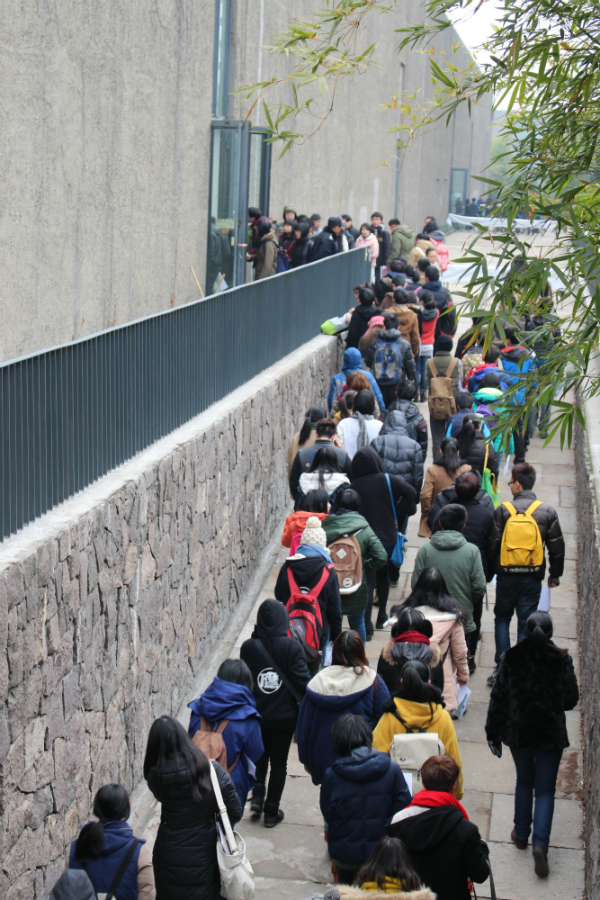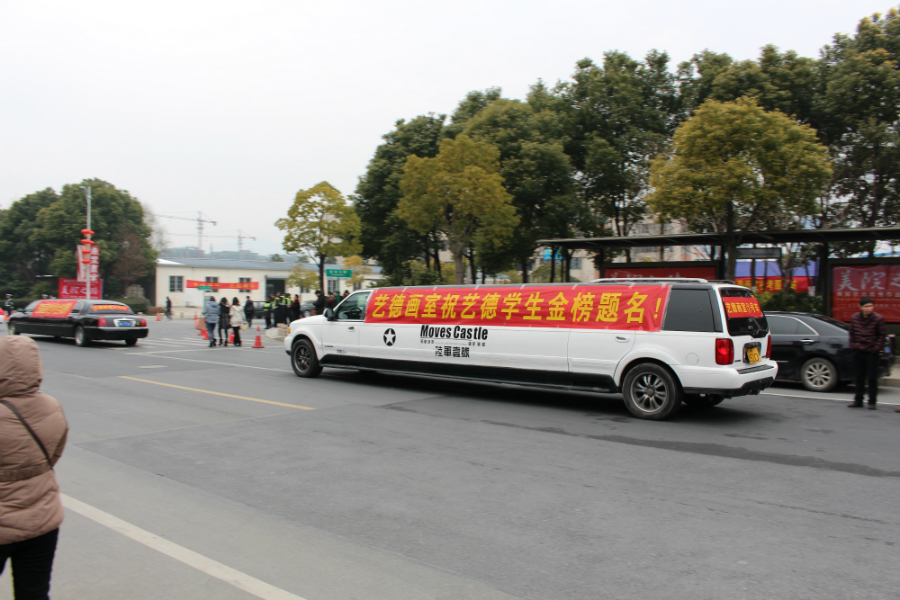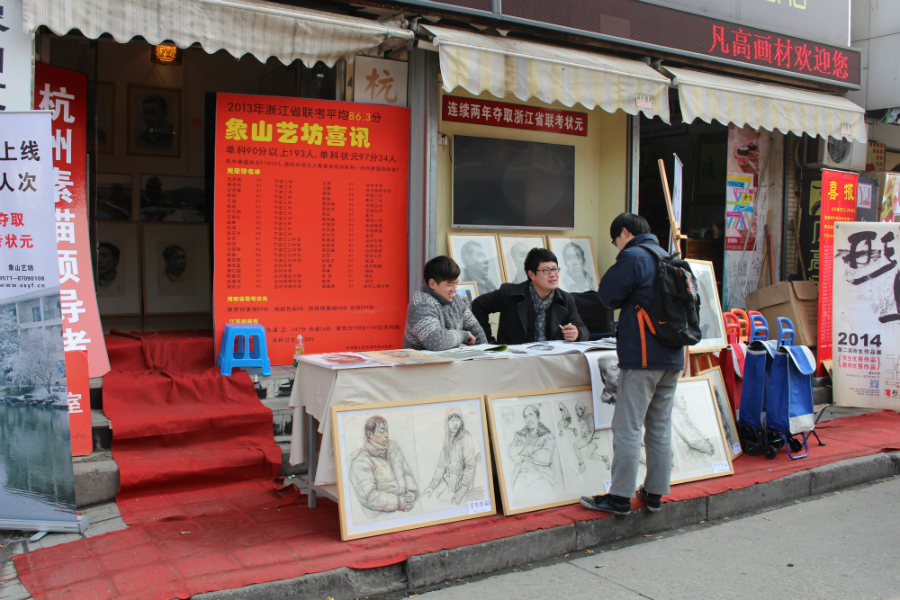In Pictures: The Chinese Art Factory
Chinese journalist Joe Zhu shares a fascinating glimpse into the big business of studying art in Hangzhou city…
When Walter Benjamin wrote about art and reproduction, I wonder if he had thought about artists themselves as a result of reproduction.
China has been regarded as the world factory for more than a decade, but maybe not in the sense of art; unless you pay a visit to the major art schools in early February when they hold exams for the applicants.
I am located in Hangzhou, the capital city of Zhejiang Province. The city has a rich heritage of art and one of the biggest art schools in the world: China Academy of Art (CAA). The school has 86 years of history, and over 7000 students spread over two campuses. One in the city centre (Nan Shan), and the other located on the outskirts (Xiangshan, in a town called Zhuan Tang), which is about 30 minutes away by car. Being one of the best in the country, it is the hardest school to get into. Each year CAA take in about 1600 freshers or first year students, but there are well over 80,000 applicants each year.

The gates open at 8am and students queue to sign in — student ID and exam pass required
To get into the school, one has to pass not only the national exam for university (Gao Kao), but also the exam held by CAA. Other art schools have the same system called Yi Kao, which could be translated as ‘art examination’. In Yi Kao, the test covers three subjects: watercolour painting, sketch and fast sketch. This system started around the new millennium, and at CAA the number of applicants peaked in 2010, reaching around 100,000.

The long building on the left is building No.10, where the students’ drawing is judged by the teachers from CAA. This picture was shot one day before the exam (12nd of Feb), when the students come to CAA to sign up and get their exam passes
My first experience of the spectacle was in 2008, upon getting a job as a journalist. I was wandering around the China Art Academy’s Xiangshan Campus (which is designed by the 2012 Pritzker Architecture Prize winner Wang Shu), and was shocked when I got into building No. 10, which is the school gallery. This long, dark building was filled with similar sketches lying on the floor, thousands of them! A man appeared to be a professor was holding a sweep handle, pointing at some of the sketches and saying something like: “This one is OK, and that one over there!”
The room was dark; I realised the sketches were all human figures. The whole scene was nothing short of surreal; I hadn’t even noticed there were guards at the door. Then I was driven out by one of them. “This is students’ exam papers, they are confidential! You are not allowed to be in here!”

The night before the exam, in one of the drawing schools. The exam topic – watercolour portraits — has been leaked, and the students are working overtime. Painting a portrait is considered the hardest challenge you can get. 20 students share one sitter in the exam, their seats randomly chosen by drawing lots before entering the room
My observation of the CAA exam was triggered that day. During the following years, I would be in the campus taking photos of thousands of new applicants.
People create a market, not to mention a population that could rival a small city. When CAA first built in Zhuan Tang, there was basically nothing there but a rural village. When the school started to bloom, shops were opened, most of them selling materials for painting and drawing. Then schools; these are for the students who want to get in CAA but lack proper training; in this case, drawing.

One of the larger drawing schools sees the exam day as a big chance to promote, so 11 super posh limos are hired, carrying banners with promotional words. On this one, it says: “We wish our students have the best results!”
You can’t study fine art during high school in China. And if you want to apply to art school, these basic skills need to be gained, so most take extra-curricular classes. The funny thing is that about half of art school applicants apply not because of their enthusiasm for art, but because these schools require lower grades. When most of the younger generations don’t know what to do in the future, they turn to art.
Like the purchase of art in the international market, art schools do not come cheap. The students join one of the drawing schools around the CAA campus as early as June for six months of training, which is aimed at passing the CAA exam. These schools usually cost 6,000 RMB (about £600) a month; plus accommodations and other costs, the fee could easily reach 50,000 RMB before a student even gets into the exam.

One of the schools showing off their students’ work, in order to recruit fresh ones
The teachers at these specialist schools are usually either CAA graduates, or teachers from the CAA. They earn money through teaching rather than artistic practice, reason simply being it’s way easier to make money.
Get into CAA, graduate with skills, then train more people… This has become a way for industry to form in the small town of Zhuan Tang. Nowadays, beside 7000+ art students in CAA, there are about 200 smaller (with less than 100 students) to huge (over 1000 students) drawing schools in the area. It has become a spectacular scene: thousands of people repeating the same things over the years.

A stadium full of young people painting portraits! Taken from my favorite position from the corridor near the top of the building. The white strips are not photoshopped; they are actual plastic tapes used to separate groups
For the past five years, I have been sneaking into the CAA to take photos of the students. My favourite spot is the corridor in the basketball stadium, because you can see about 800 students being squeezed into one large room, then divided into groups of 20. Each group is separated only by plastic tapes and boards.
It’s not a factory, but what else do you call hundreds of people doing the same thing under the same roof?
Images and words by Joe Zhu





